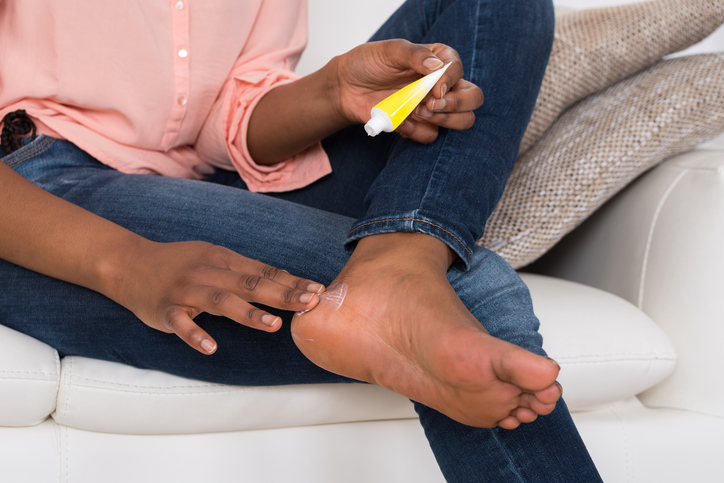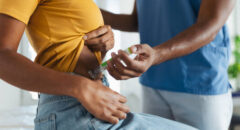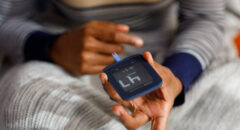 Foot problems are common in all people with diabetes. However, African Americans are at greatest risk.
Foot problems are common in all people with diabetes. However, African Americans are at greatest risk.
In 2012, African Americans were hospitalized 3.5 times more for lower limb amputations as compared to whites. The good news is you can lower your chances of having diabetes-related foot problems by taking care of your feet every day.
Managing your blood glucose levels can also help keep your feet healthy.
What Causes Diabetes Foot Problems?
One of the complications of diabetes that can have a negative impact on foot health is diabetic neuropathy, a type of nerve damage. Diabetic Neuropathy can causetingling and pain and can make you lose feeling in your feet. When you lose feeling in your feet, you may not feel a pebble inside your sock or a blister on your foot, which can lead to cuts and sores. Cuts and sores can become infected.
Peripheral vascular disease, another complication often seen in people with diabetes, can lower the amount of blood flow in the lower part of your legs and feet.
Poor blood flow deprives the skin and other tissues of oxygen and decreases the ability of white blood cells to get to the site of infection to promote healing. Improper healing can lead to gangrene and amputation of your toe, foot, or part of your leg.
The following tips can help lower your chances of having diabetes-related foot problems.
Check your feet every day.
Foot problems can develop overnight. Check the top and bottom of your feet every morning and before bed each night. Look for problems such as cuts, sores, red spots, swelling or fluid-filled blisters. If you notice any problems with your feet contact your healthcare provider immediately.
Wash your feet every day.
Wash your feet with soap in lukewarm water. Use your elbow to test the water temperature. Do not soak your feet because your skin will get too dry.
After washing and drying your feet thoroughly, put talcum powder or cornstarch between your toes. The powder will keep the skin dry to help prevent an infection.
Trim your toenails straight across.
If you cannot reach your toenails easily, leave the task of cutting them to your foot doctor, along with your corns and calluses. If you want to get a pedicure at a salon, you should bring your own nail tools to prevent getting an infection.
Wear shoes and socks at all times.
Do not walk barefoot or in just socks – even when you are indoors. You could step on something and hurt your feet.
Check the inside of your shoes before putting them on, to make sure the lining is smooth and free of pebbles or other objects.
Make sure you wear socks, stockings, or nylons with your shoes to keep from getting blisters and sores. Choose clean, lightly padded socks that fit well. Socks with no seams are best.
Wear shoes that fit well and protect your feet.
Smooth corns and calluses gently.
Never cut corns andcalluses yourself. Talk with your foot doctor about the best way to care for these foot problems. If you have nerve damage, corns and calluses can become ulcers leading to infection.
Protect your feet from hot and cold.
If you have nerve damage from diabetes, you may burn your feet and not know you did. Wear shoes at the beach and on hot pavement. Keep your feet away from heaters and open fires. Do not put a hot water bottle or heating pad on your feet.
Get a foot check at every health care visit.
Ask your health care provider to check your feet at each visit. Take off your shoes and socks when you're in the exam room, so they will remember to check your feet. At least once a year, get a thorough foot exam, including a check of the feeling and pulses in your feet.
 Constance Brown-Riggs, MSEd, RD, CDE, CDN is a registered dietitian, certified diabetes educator, national speaker and author of The African American Guide to Living Well with Diabetes.. She is Dannon One Yogurt Every Day Nutrition Advisor.
Constance Brown-Riggs, MSEd, RD, CDE, CDN is a registered dietitian, certified diabetes educator, national speaker and author of The African American Guide to Living Well with Diabetes.. She is Dannon One Yogurt Every Day Nutrition Advisor.









